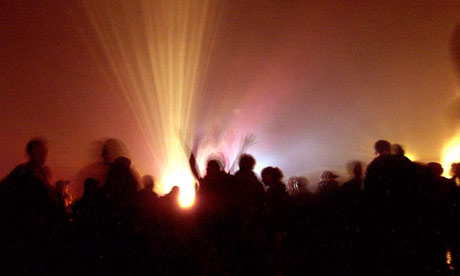
Brightly coloured designer earplugs should be as familiar a sight on the dancefloor as water bottles, a charity said yesterday after research suggested that nine out of 10 young people show early signs of hearing damage after a night out.
A study by the Royal National Institute for Deaf People (RNID) found the first symptoms of damage - dull or fuzzy hearing, tinnitus or hyperacusis (over-sensitivity to certain sounds) - in 90% of young people who had spent the night at a club, gig or loud bar.
The charity concedes that most young people are reluctant to wear earplugs because of their "medicinal" appearance and because they think they will block out the music. The plugs are worn by just 3% of young people on nights out. But the charity hopes to help change their image by launching a competition to find a fashionable, modern spin on them.
Students from De Montfort, Coventry and Sheffield Hallam universities are being invited to design earplugs that will appeal to young people. The winners will be awarded internships with leading design consultancies Ideo, Tangerine, Alloy, and Pearson Matthews.
A podcast released by the Ministry of Sound in conjunction with the RNID features three DJs, Alistair Whitehead, Rob Roar and the club's first DJ, Jazzy M, speaking about their experiences wearing plugs. The RNID hopes this, along with increased awareness and an "exciting" new design, will encourage people to wear them.
Emma Harrison, of the RNID, said the popular notion that plugs block music was a misconception. She said: "They attenuate the sound - meaning that the decibel level reaching your ear is reduced, while you can still hear the music you are listening to."
Many young deaf people have abandoned standard ear moulds for brightly coloured or glittery versions. Arlington Laboratories, which makes moulds for hearing aids, has a range of designs on offer including coloured ones and cartoon varieties, and said they had been "very popular". Dreve, a medical product manufacturer in the Netherlands, has responded to the growing appetite for bling by making ear moulds with Swarovski crystals.
"We think young people should be able to make informed choices about the exposure to loud noise," said Harrison. "If you use condoms, slather on suncream or wear a bike helmet when you cycle, why not wear earplugs to protect your ears from the risk of permanent damage?"
The RNID suggested other ways for people to protect their ears. As well as standing away from speakers in pubs and clubs and concert venues, it advises people to take a five-minute break for every hour they spend listening to music.
Exposure to excessive noise is the leading avoidable cause of permanent hearing loss across the planet, according to a report by the World Health Organisation.

